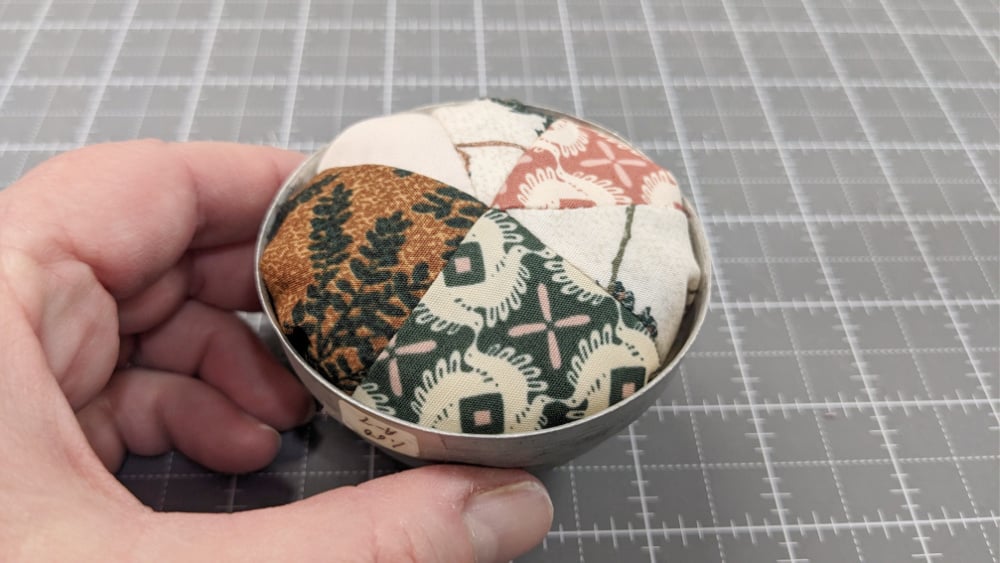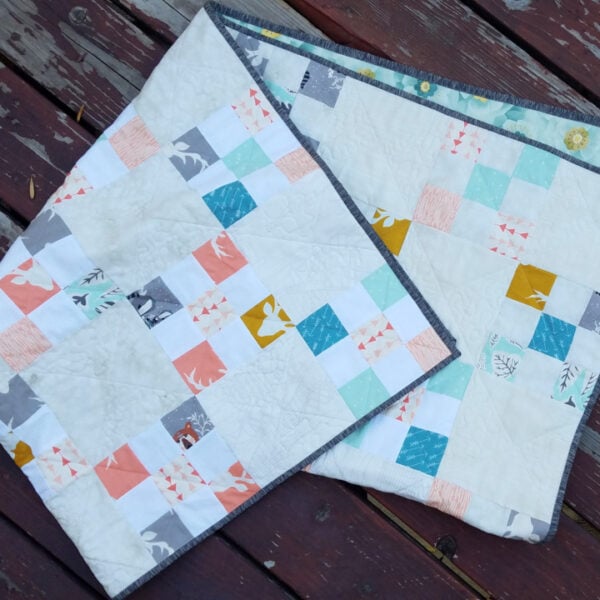In the world of quilting, having sharp tools is essential for achieving precise and clean cuts. One tool that quilters rely on heavily is the rotary cutter.
Over time, the blade on your rotary cutter will dull, making it difficult to cut through fabric smoothly.
Changing your rotary cutter blade regularly is a simple task that can significantly improve your quilting experience.
Let’s check out why it’s important to change your rotary cutter blade, how often you should do it, and provide a step-by-step guide to replacing the blade.
Keeping your rotary cutter blade sharp will help you achieve clean, accurate cuts, reduce hand fatigue, and make the quilting process more enjoyable.
Whether you’re working on a large quilt or a small project, a sharp blade is a must-have for any quilter.

Rotary Cutters – Olfa Rotary Cutter
I typically don’t change my rotary cutter often enough. I use and use and use and even when it’s dull and it starts skipping threads and has a bump in it – I use it even longer!
Not sure why I don’t change the blade as often as I should. I don’t understand why I wait so long, but today I’m going to show you how I change it.
It’s a simple thing – but a great reminder to do this. It’s part of making quilting fun and not frustrating.
Why Change Your Rotary Cutter Blade:
- Clean Cuts: A sharp blade ensures clean, precise cuts, which are crucial for accurate piecing and sewing. Dull blades can fray fabric edges and cause uneven cuts, affecting the overall quality of your quilt.
- Reduced Hand Fatigue: A sharp blade requires less pressure to cut through fabric, reducing strain on your hands and wrists. This is especially important during long cutting sessions or when working with thicker fabrics.
- Increased Efficiency: Cutting fabric with a sharp blade is quicker and more efficient. Dull blades can slow you down and make the cutting process frustrating and time-consuming.

How Often to Change Your Blade:
The frequency of changing your rotary cutter blade depends on how often you use it and the type of fabric you’re cutting. Here are some general guidelines:
- Frequent Use: If you use your rotary cutter daily or for large projects, consider changing the blade every couple of weeks.
- Moderate Use: For quilters who use their rotary cutter a few times a week, changing the blade every month is a good practice.
- Infrequent Use: If you only quilt occasionally, changing the blade every few months should suffice.
Pay attention to signs that your blade needs changing, such as difficulty cutting through fabric, uneven cuts, or frayed edges.
How to Change Your Rotary Cutter Blade:

1- Place a finger on the opposite side of the bolt you are removing to hold it steady.

2- Remove the bolt on the one side, turning left (lefty loosy)

3- Remove the washer (it’s not supposed to be flat)

4- Remove the long stem which will release the rotary blade

5- Remove the blade and set aside all the pieces. Remove any lint on the rotary cutter (the black slide button area) if needed.

6- Mark an X on the blade so you know it’s not new

7- Use a sticky note pad piece of paper to grab the rotary cutter off of the cutting mat. It’s still sharp so be careful.

8- Fold the paper around the blade to secure before tossing it in the trash

9- Remove one blade from the package.

10- Place the blade on the slide button area – replace the long stem until it slips into the hole properly

11- Close the rotary before putting on the other pieces

12- Place your finger back onto this piece and flip over, continue to hold your finger there

13- Replace the washer

14- Replace last bolt and turn to the right to secure

15- Check that the rotary opens and closes nicely. If it’s too tight, loosen the bolt a tiny bit until it works smoothly.
Changing Your Rotary Cutter Blade Video
By regularly changing your rotary cutter blade, you can maintain the efficiency and precision needed for successful quilting projects.
Keep an eye on your blade’s performance, and don’t hesitate to replace it when necessary.

More Quilting 101 Resources
- Glow Rulers
- Using quilt templates and rulers
- Mile a minute technique
- Ironing and pressing for quilters
- Strip piecing
- Nesting Seams
Becky Jorgensen is the creative quilter behind Patchwork Posse, the Patchwork Planner and her online quilt group Patchworkers Plus. You can find her patterns in books, magazines, and her quilt membership. Gather your quilting supplies, organize your sewing space, explore the process of disappearing quilt blocks, or finish a free quilt pattern. I'll help you use what you have, finish what you start and make your quilting journey fun!
Follow me here: Facebook, Pinterest, YouTube







Thank you so much for this tutorial. I always a\have such a hard time changing blades.
When putting back together, does the bent side of the washer go up or down?
I put it so it was down. but not really sure if it matters.